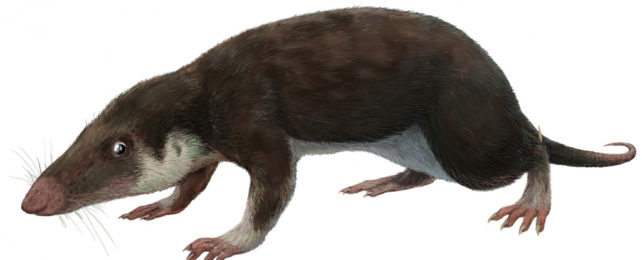Scientists don't know much about what the very first mammal looked like, but they do know that it lived around 180-250 million years ago and that every mammal on Earth – from blue whales to platypuses – is descended from it.
But thanks to new research, we now know what its genome looked like.
An international team of scientists has computationally pieced together a likely genome for the common ancestor of mammals by working backward from 32 genomes of living species.
The analysis included a wide range of species from all three types of mammals, including narwhals, bats pangolins, and humans for placental mammals, Tasmanian devils and wombats for marsupials, and the egg-laying platypus.
Chickens and Chinese alligators were used as a non-mammal comparison group.
The researchers reconstructed the complete set of chromosomes at 16 nodes stretching back to the common ancestor of all mammals. (A node represents the last common ancestor between two distinct genetic lines; it is the point where the phylogenetic tree splits into multiple branches.)
Researchers concluded that the species at the very start of the mammal phylogenetic tree likely had 38 chromosomes.
It shared nine of the smallest chromosomes with the common ancestor of mammals, birds, and reptiles, which is a step even further back in the tree.
"This remarkable finding shows the evolutionary stability of the order and orientation of genes on chromosomes over an extended evolutionary timeframe of more than 320 million years," says senior author and evolutionary biologist Harris Lewin.
Many of these highly conserved areas contain genes involved in developmental functions.
The researchers examined how chromosomes were broken apart, combined, deleted, repeated, or translocated over time.
The sections of the chromosomes heavily affected by rearrangements are called 'breakpoints', a rich source of genetic variations that play a role in separating species through evolution.
The highest breakpoint rate was observed when therians – marsupial and placental mammals that give birth to live young – split from the egg-laying monotremes.
"Our results have important implications for understanding the evolution of mammals and for conservation efforts," says Lewin.
It is likely the earliest mammal looked somewhat like the tiny, rat-like mammal called Morganucodon, which lived around 200 million years ago and laid eggs. Its fossil was discovered in a limestone crevice in 1949 in Wales in the UK.
This genus is related to living mammals, but it isn't considered a common ancestor, making it a sister group to the mammal line.
Another mammalian sister clade is the rodent-like Tritylodont genus. Fossils found in Africa and North America are too specialized to be a common ancestor of all mammals, but they would have lived around the same time as the first mammal species.
This paper was published in the Proceedings of the National Academy of Sciences.
